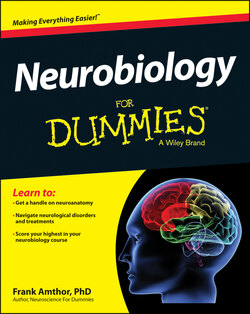Читать книгу Neurobiology For Dummies - Frank Amthor - Страница 59
Introns and exons
ОглавлениеThe discovery that many genes were interrupted by introns (intervening sequences) that were not expressed came as quite a shock to much of the scientific world. Depending on the species, introns may be the majority of the total DNA sequence of the organism. RNA splicing (refer to the earlier section “Protein synthesis”) removes introns to produce a final mRNA molecule ready for translation. The term intron refers to both the non-expressed DNA sequence and its corresponding sequence in the unspliced mRNA. After the introns are spliced out of the mRNA, the result is called an exon.
The origin of introns is still unclear. Introns were initially viewed as accidental DNA sequences, possibly leftovers from evolution or even parasitic “selfish” DNA. One conjecture has been that introns provide places for the DNA sequence to break during crossover in meiosis, making it less likely that a break will occur in the middle of a needed gene.
Regardless of their origin, introns allow the protein sequences generated from a single gene to vary greatly. This is because the same DNA sequence can generate different proteins by varying how the mRNA is spliced. Environmental factors that get taken up by a cell can modify the control of alternative RNA splicing.
